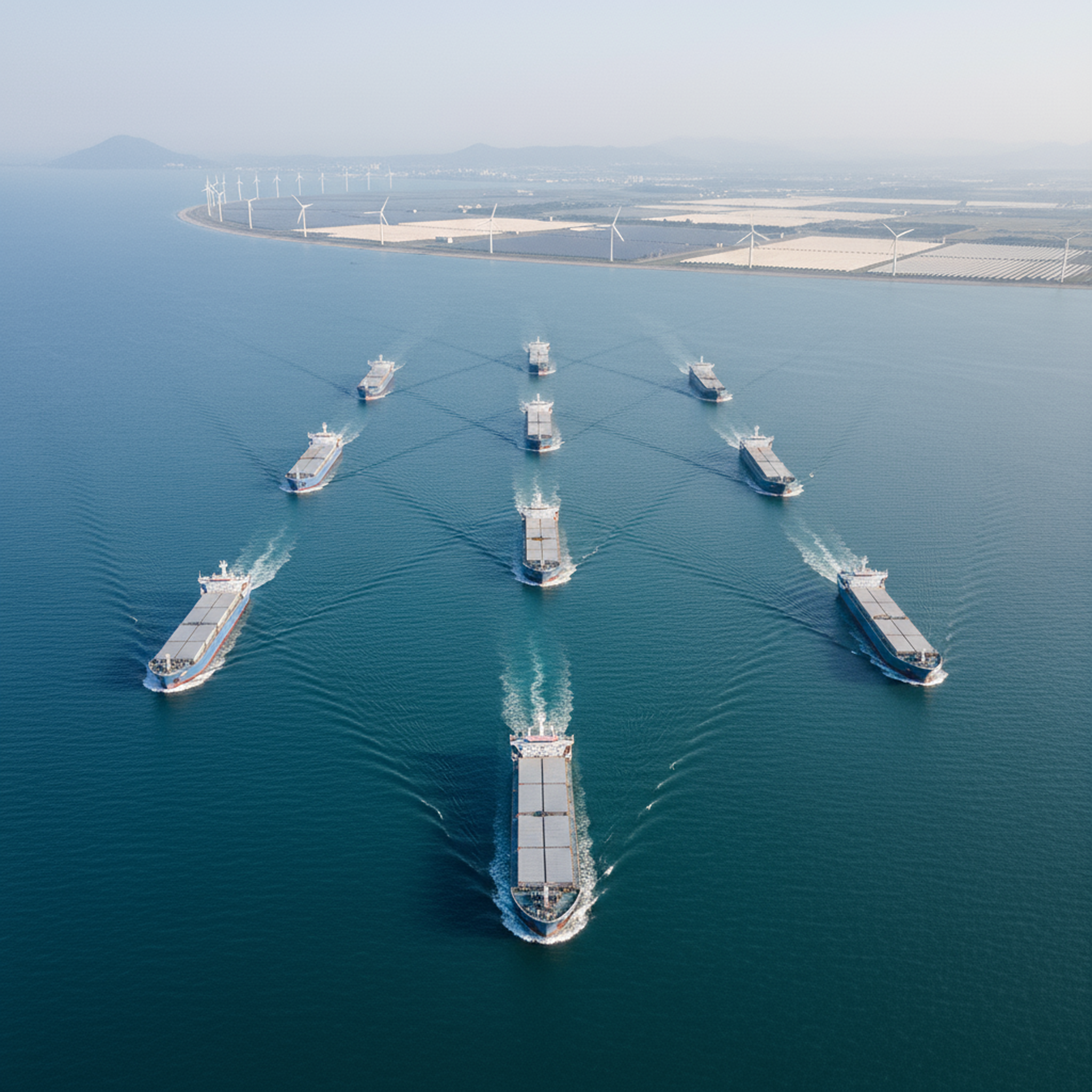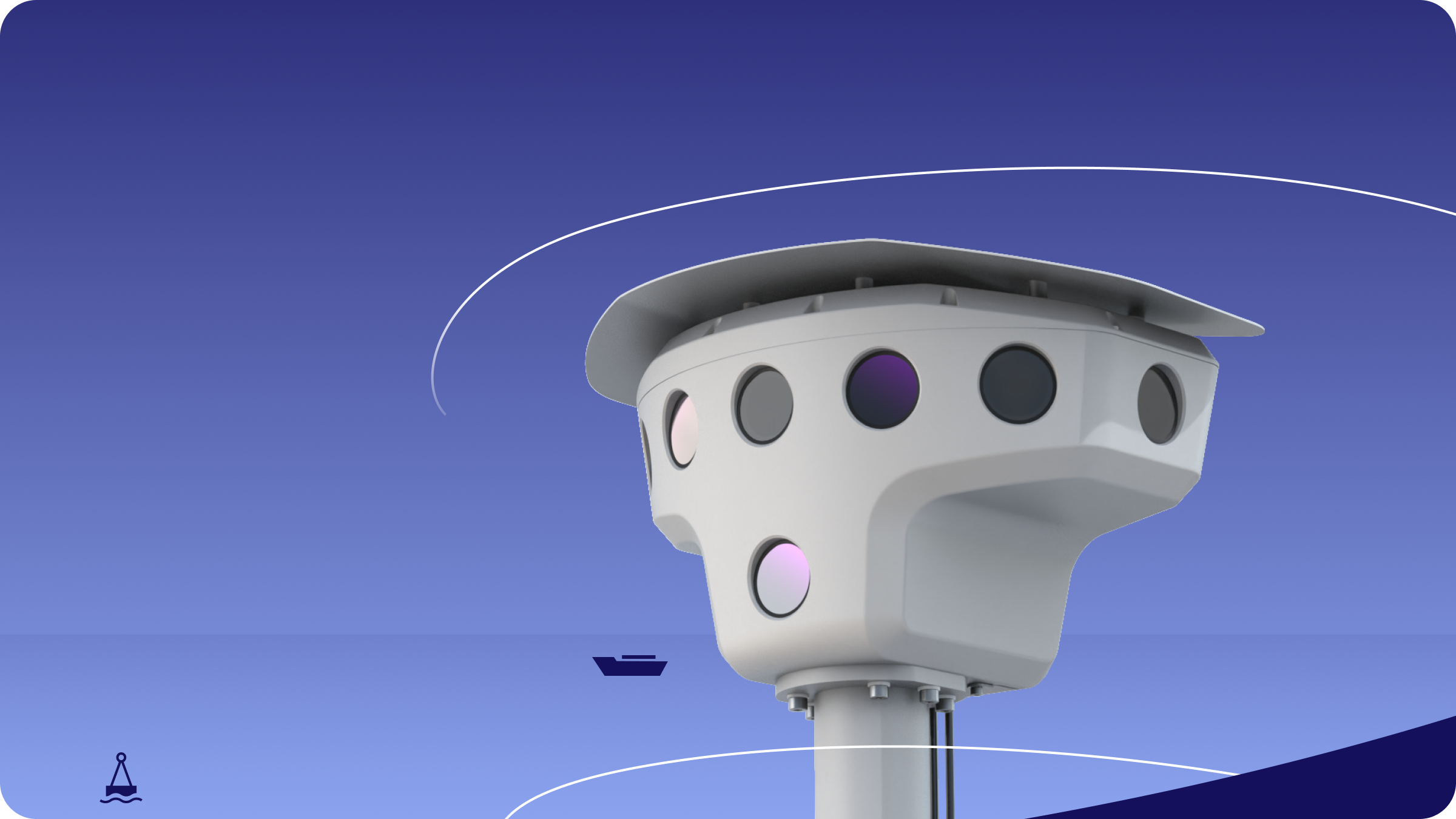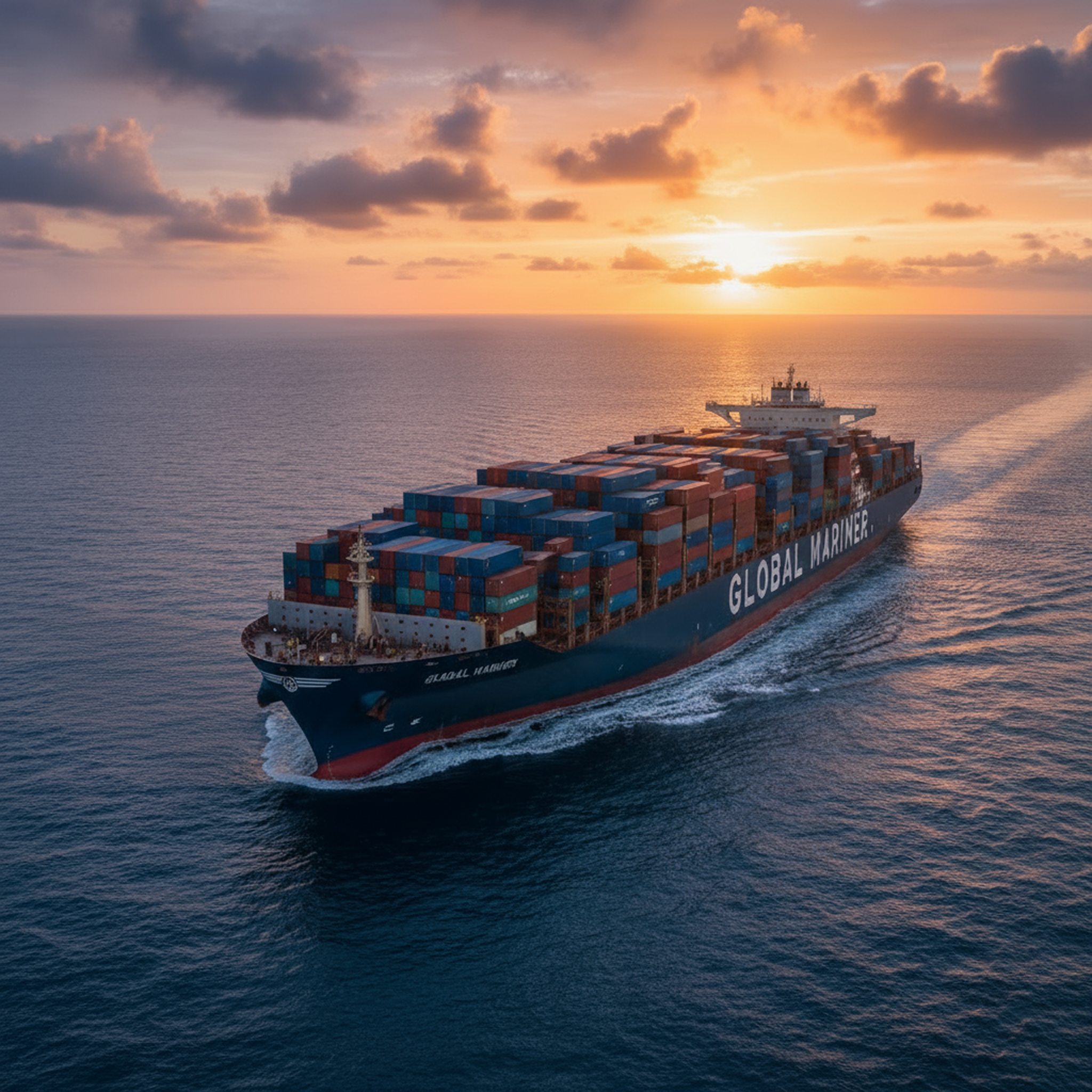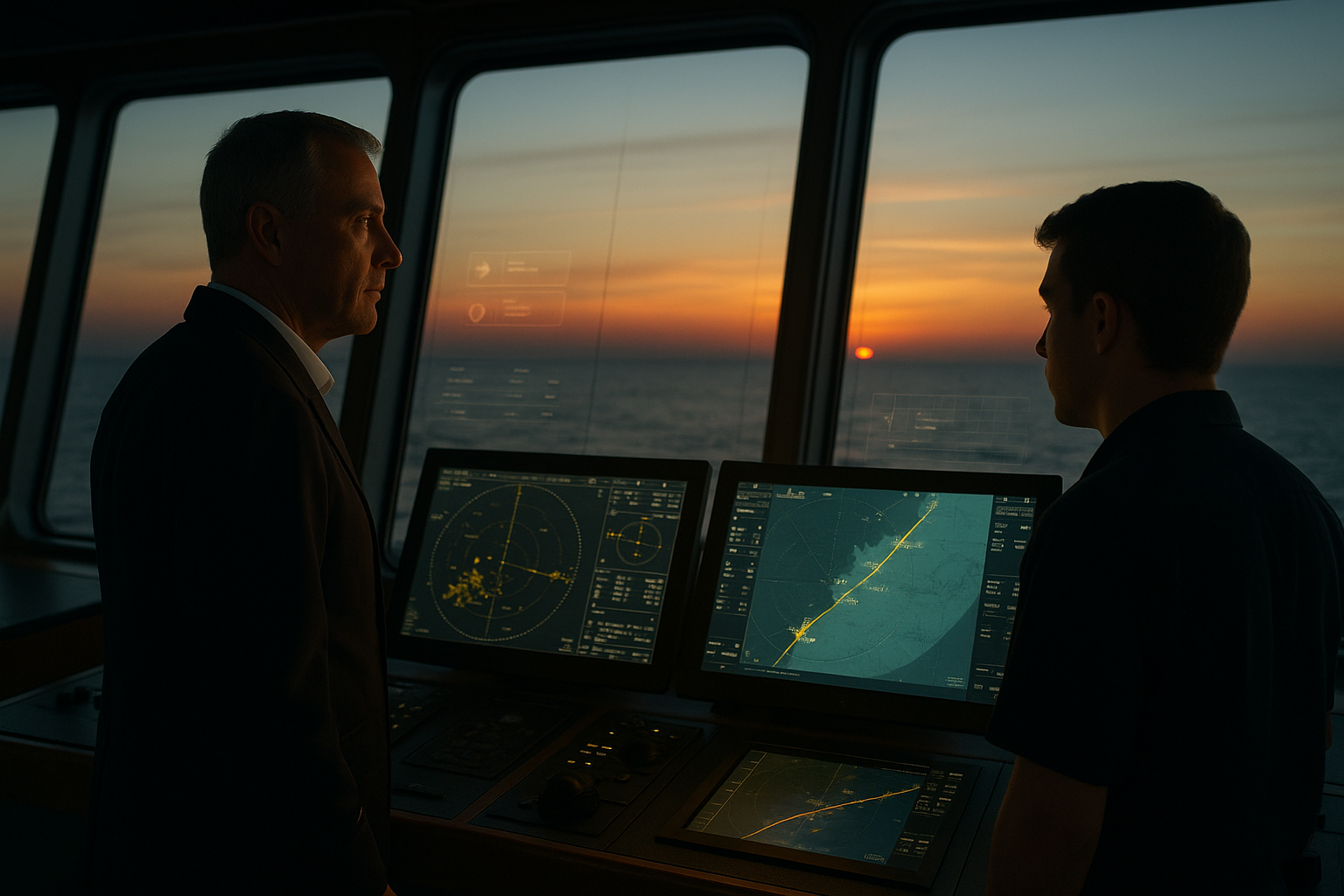Green shipping corridors represent a fundamental shift in the shipping industry’s approach to tackling its environmental footprint, moving from abstract targets to practical, real-world applications. These defined trade routes, which serve as testbeds for zero-emission fuels, infrastructure and policy, are a crucial mechanism for de-risking the green transition and demonstrating its viability at scale. Supported by a coalition of governments, ports, cargo owners and shipping companies, they are designed to move beyond isolated pilot projects and prove that a decarbonized industry is not only possible but practical and profitable.
As a holistic vision, green corridors are about more than just changing a ship’s fuel, connecting the entire value chain from ships and ports to land-based energy producers and logistics into a single, collaborative ecosystem where genuine decarbonization can be demonstrated at scale. The concept of green corridors was formally backed at COP26 through the Clydebank Declaration, where 24 countries committed to establishing at least six zero-emission maritime routes by the middle of the coming decade. Together with the IMO’s target to cut emissions by 50% by 2050, these initiatives provide the regulatory backbone driving corridor development worldwide.
Defining a Green Corridor: Key Ingredients
A green corridor is a deliberately focused route chosen for its strategic importance and ability to support significant investment. Its success hinges on a blend of four critical pillars, all working in sync:
Defined Trade Lane: These corridors are established on high-volume, strategically important routes, such as the major Europe-Asia lanes, but they can also be regional or national. They include short-sea routes like the Heysham to Dublin ferry line in the UK or the Moss-Horten route in Norway.
Fuel and Port Infrastructure: This is the foundation of the physical transition. It involves building the necessary production, storage, distribution and bunkering infrastructure and port equipment to support the introduction of new fuels such as green methanol, ammonia and hydrogen, as well as enabling shore power for vessels at berth.
Policy and Financial Alignment: Governments play a vital role here by providing incentives, public-private partnerships and regulatory frameworks that de-risk the massive investments required for this kind of transition. This ensures that early movers are not at a competitive disadvantage.
End-to-End Collaboration: This is arguably the most crucial pillar. A green corridor is a team effort, requiring synchronized cooperation between ship operators, ports, fuel suppliers, cargo owners, regulators and technology providers. It is this collaborative ecosystem that allows for an integrated, end-to-end approach to decarbonization.
By concentrating effort on a few key routes, these corridors act as living laboratories. The knowledge and best practices gained from these proof-of-concept zones can then be replicated and scaled globally.
Why Shipowners Are Engaging in Green Corridors
For shipowners and operators, green corridors are more than an environmental experiment. They create a lower-risk setting to trial new fuels and digital practices while unlocking clear business advantages.
Early participation signals a strong commitment to ESG goals, which is increasingly attractive to cargo owners and charterers. Corridors also provide access to preferential financing, subsidies and reduced port fees – incentives designed to ensure early movers are not left at a competitive disadvantage.
Equally important, operating within a corridor helps companies prepare for tightening regulations such as EU ETS and FuelEU Maritime. The controlled environment allows owners to understand compliance obligations, test reporting processes and build credibility with stakeholders before these rules apply across the global fleet.
Real-World Examples: Green Corridors in Action
The great thing about green corridors is that there’s no single, one-size-fits-all model. Each initiative is uniquely tailored to its geography and economic context, and they are not just for shipping. Here are a few notable examples from around the world that demonstrate this flexibility across both sea and land. These initiatives are pushing the boundaries of what shipping green corridors can achieve.
UK-Ireland Green Corridors: The UK’s first green shipping corridor is being established on the Heysham to Dublin ferry route. NatPower Marine and Peel Ports Group have partnered to install shore power infrastructure at Heysham Port, with plans to have all four berths electrified by 2026. This initiative is expected to achieve a significant reduction of more than 10,000 tonnes of CO₂ annually by allowing ferry services to operate with zero emissions while at berth and at sea. In a similar vein, a study has identified the busy Holyhead-Dublin route as a strong candidate for a green shipping corridor, with green methanol as a promising fuel capable of reducing emissions by up to 80%.
The Moss-Horten Electric Ferries (Norway): This is a prime example of a green corridor focused on electrification and automation. Norwegian grocery distributor ASKO has two fully electric drones that transport food daily across the Oslo Fjord between Moss and Horten. The project is designed to replace a vast number of road kilometres of truck transport per year, estimated to cut 5,000 tonnes of CO₂ emissions annually. The vessels are initially operating with a limited crew before eventually transitioning to fully uncrewed voyages, monitored from a shore-based remote operations centre. The busy Moss-Horten route also has other electric Ropax ferries that have reduced emissions by 75%.
The Nordic Hydrogen Corridor: This project aims to enable Fuel Cell Electric Vehicles (FCEVs) to travel between metropolitan areas in the Nordic countries (Norway, Sweden, Denmark and Finland) and further into Europe via Germany. As a pilot program, it includes the deployment of eight hydrogen refuelling stations, a hydrogen production unit and 100 FCEVs to create an interconnected, emission-free transport sector. The hydrogen will be produced from renewable energy sources like wind and sun, and the project is a collaboration among Statkraft (renewable energy and production), Everfuel (distribution), and Hyundai and Toyota (vehicle providers).
Europe’s Green Baltic & Nordic Corridors: A great example of a regional approach, this initiative is a collaboration between Singapore-based carrier X-Press Feeders and a consortium of six European ports in Belgium, Estonia, Finland, Latvia and Lithuania. They plan to launch two specific routes, the Green Baltic X-PRESS (GBX) and Green Finland X-PRESS (GFX), in the third quarter of 2024, powered by green methanol. The initiative is focused on one fuel type for short-sea and feeder routes and is leveraging the rapid digitalization of ports like Tallinn to lead the transition.
The Singapore-Rotterdam Green & Digital Corridor: This is the world’s longest green and digital corridor, connecting two of the busiest hubs on the planet. This initiative involves a vast coalition of 28 partners, including major industry players like Maersk, MSC and CMA CGM. A key feature of this initiative is its explicit dual focus on “green” and “digital” solutions. While it is testing and accelerating the adoption of multiple sustainable fuels like ammonia and methanol, it also emphasizes the importance of digital solutions. For example, successful trials have been conducted for port-to-port data exchange to optimize vessel arrival planning and for ship-to-shore data exchange to enable efficient, paperless port clearance. The Singapore Rotterdam Corridor is a clear blueprint for how digital and green can work together.
The Australia-East Asia Iron Ore Corridor: This corridor is specifically designed to decarbonize the massive iron ore trade route from Western Australia to East Asia. A study found that zero emission ships, specifically ammonia-powered bulk carriers, could be sailing this route by 2028, with the potential to scale to approximately 360 vessels by 2050. The project’s success is heavily reliant on government support, including policies that incentivize the production of clean fuels.
The Missing Link: Why Fuel Isn’t Enough
While the focus of green corridors is often on fuel and infrastructure, they face significant operational challenges. Many are located in the world’s most congested and complex waterways, where a variety of risks – from collisions to port congestion and even electronic interference – are a constant threat. According to Allianz’s 2025 Safety and Shipping Review, three regions – the South China, Indochina, Indonesia and Philippines region, the British Isles and the East Mediterranean and Black Sea – account for nearly half of all global loss activity over the past decade. These are the very regions most likely to host green corridors. The success of these initiatives depends not just on fuel supply but on making operations safer, more predictable and more transparent. Without that, even the greenest vessels risk delay, disruption and unnecessary emissions.
Navigating a Sea of Problems
It’s not just about avoiding collisions at sea. Shipping today faces a complex web of challenges that can derail even the best-laid decarbonization plans.
Port Congestion: Delays at ports, often caused by a surge in demand or a mismatch between new, larger vessels and older port infrastructure, can lead to ships waiting at anchor, burning excess fuel and raising emissions. This defeats the purpose of using green fuels in the first place, creating a detrimental causal loop where operational inefficiency directly compromises decarbonization efforts.
| Green Corridor Pillar | Key Challenge Addressed | Orca AI’s Contribution |
| Safety & Risk Mitigation | Collision risk in congested or low-visibility conditions. | AI-powered object detection and collision-avoidance alerts in real-time. |
| Operational Efficiency | Inconsistent navigation and fuel waste from reactive manoeuvres. | Enhances bridge awareness and consistency across fleets; enables proactive navigation. |
| Data Transparency & Compliance | Need for verifiable emissions and performance reporting. | Records time-stamped data on vessel behaviour for reliable audit trails and reporting. |
Geopolitical Threats: In high-traffic, sensitive areas like the Red Sea and the Gulf of Hormuz, recent reports detail a variety of threats ranging from piracy and projectile attacks to severe GPS jamming and electronic interference. These factors can disable traditional navigation systems, compounding the risk of an incident in areas already prone to collisions.
Enter the Digital Co-Pilot: Orca AI as a key accelerator
This is where digital enablers become essential. They are not just a bonus; they are a critical component for making green corridors work in the real world. AI-powered systems provide a digital co-pilot for crews, offering real-time situational awareness as well as transparent data for fleet managers on shore. These solutions are the missing link that make a visionary concept a workable reality. In the world of zero emission shipping, Orca AI is providing the navigational and operational certainty the industry needs to move forward with confidence.
Orca AI’s Strategic Role
Orca AI’s operational platform provides a multi-faceted solution that directly addresses the core challenges of green corridors – enhancing safety and efficiency while ensuring data transparency.
Making Every Voyage Safer: Orca AI acts as an automated lookout on the bridge, using AI and computer vision to enhance crew awareness 24/7. The system continuously detects, tracks and classifies targets – from vessels to floating objects –in real-time, especially in congested or low-visibility conditions. This reduces human error and cognitive load, a critical benefit in high-pressure situations. Read how Orca AI reduces collision risk.
Keeping the Fleet in Sync: The platform provides shore teams with unprecedented visibility into fleet safety and operations via cloud-based dashboards. This allows fleet managers to monitor navigational trends and maintain consistent performance across all vessels in a corridor. It’s a vital tool for the entire collaborative ecosystem, ensuring smoother, more reliable traffic flow. Explore how fleet-wide visibility drives safer, smarter operations.
Trusted Data for a Transparent Future: Green corridors require verifiable data for compliance and reporting. Orca AI supports this by recording time-stamped data on vessel behaviour, including speed, location and safety events. This creates a reliable audit trail that can be used for reporting, incident reviews and seamless integration into broader governance systems. See how Orca AI enables compliance with new regulations. This capability is essential for building trust among stakeholders and for providing the necessary data for external validation, which is crucial for proving the success of a green corridor.
The Proof in Numbers
The impact of Orca AI is backed by tangible results from real customers. Maran Tankers Management, for example, reported a 74% reduction in close encounter events and near misses. This is a powerful metric for measuring the direct impact on safety. The connection between safety and efficiency is further underscored by the case of Seaspan Corporation, which saved $100K in fuel saving per vessel per year by using Orca AI. This demonstrates that avoiding collision avoidance manoeuvres – which are highly inefficient and burn excess fuel – directly contributes to both a safer and a greener operation.
The Road Ahead
Green corridors are a testament to what the future of zero emission shipping can look like. But their success depends on a holistic approach. It’s not just about green fuels; it’s about creating better-coordinated, digitally supported supply chains. Orca AI’s role is to complement the fuel and infrastructure pillars – making these visionary corridors safer, more reliable and more transparent. By strengthening the operational layer of these routes, digital solutions help ensure that green corridors are not only a forward-thinking idea but a workable, scalable reality.









